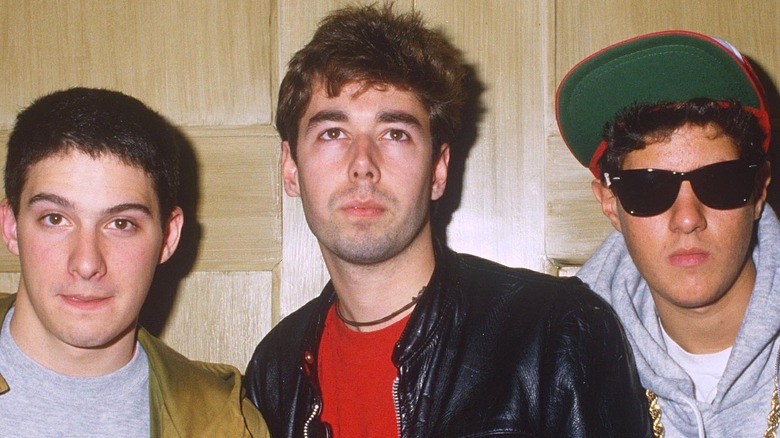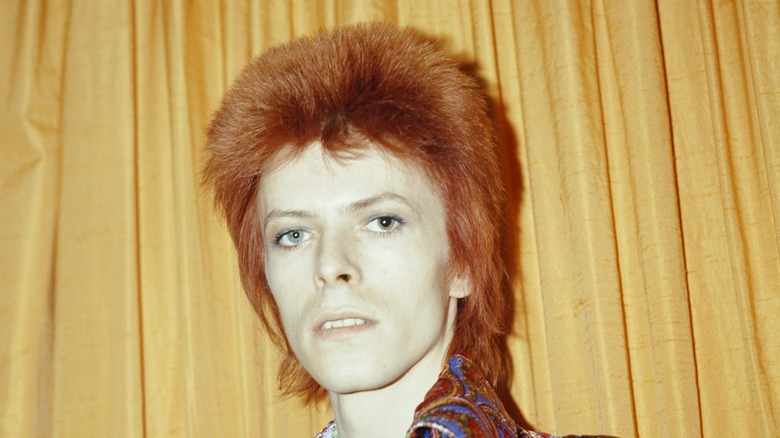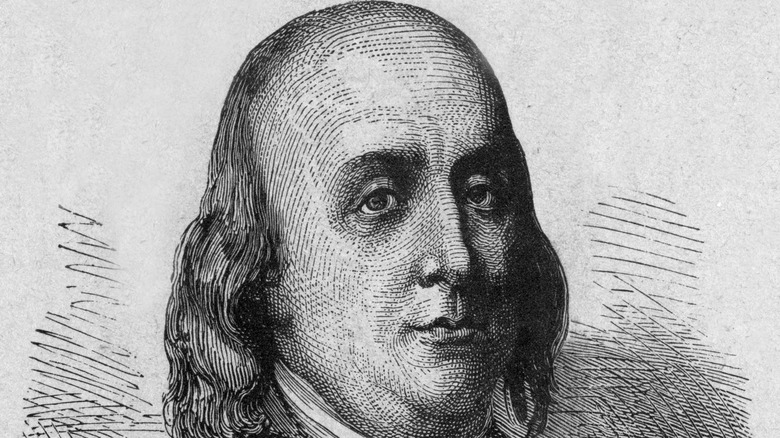The Beastie Boys Are Really The Ones To Thank For The Term Mullet
With the meteoric, non-ironic return of one of the most iconic '80s hairstyles, the mullet, some may wonder where such a hairstyle got its unique name. While pop culture points to the Beastie Boys for dreaming up the moniker, the hairstyle hails way back before the Beastie Boys would utter the words, "number one on the side and don't touch the back, number six on the top and don't cut it wack, Jack," in their 1994 track "Mullet Head." According to History, the mullet wasn't just for young '80s fashionistas. In fact, the style has a long history of being worn by rabble-rousers.
Back in 1994, the Beastie Boys released the iconic album "Ill Communication," featuring the classic "Mullet Head." Although the Beastie Boys are credited with popularizing the name, the style had already been prominent decades earlier — in the '70s, with pop music's transition to glam rock (via Dazed).
Business in the front
Capitalizing on the glam rock look of the late '70s, the mullet would gain further notoriety a decade later, fueled by a wave of '80s hair metal bands, when younger rockstars paid homage to their heroes of the '70s. David Bowie sported the then-unnamed hairstyle during his Ziggy Stardust days — a bright orange cut, short on the sides and long in the back — circa 1972 (via the Library of Congress). Singer Rod Stewart would shortly thereafter adopt the cut, along with the likes of other classic rock artists like Paul McCartney and Keith Richards (via About the 80s).
Decades later, in 1992, the Beastie Boys were looking to expand their sound. With several albums to their name, the Beasties' style went from the party sound of 1986's "Licensed to Ill," to something they were uncertain of a few years into the '90s (via UDiscoverMusic). Looking to expand their sound, the Beasties teamed up with the producer of their third outing "Check Your Head," Mario C (via Discogs) to record their new album. Two years later, on June 18, 1994, the Beasties dropped "Ill Communication." With its lead single "Sabotage" crushing the charts, "Ill Communication" debuted in the No. 1 spot of the Top 200 the week of its release (via Billboard). And while the original track listing for "Ill Communication" didn't include "Mullet Head" (via Discogs), the Japanese release did (via AllMusic), thus exposing the world to the word mullet.
Party in the back
Although rockstars may try to lay claim to starting the infamous hairstyle, according to History, the past is littered with rebels sporting the "cut the sides, don't touch the back" look. In fact, while not mentioned by name, the mullet makes an appearance in Homer's Iliad (via History). In the classic poem, Homer describes a squad of soldiers' hair: "their forelocks cropped, hair grown long at the backs." Ben Franklin was also known for sporting the look in lieu of the powdered wigs that the wealthy fancied during the late 1700s (via History).
However, it wouldn't be until 1995 that the word mullet as a name for the hairstyle would officially debut in print form — in an interview with Grand Royal, the Beastie Boys' own magazine. According to Stuff, the Oxford English Dictionary points to that interview with the Beastie Boys as the first time the word mullet was used in pop culture. And while the cut would be out of vogue by 1995, the hairstyle's iconic reputation was established.


